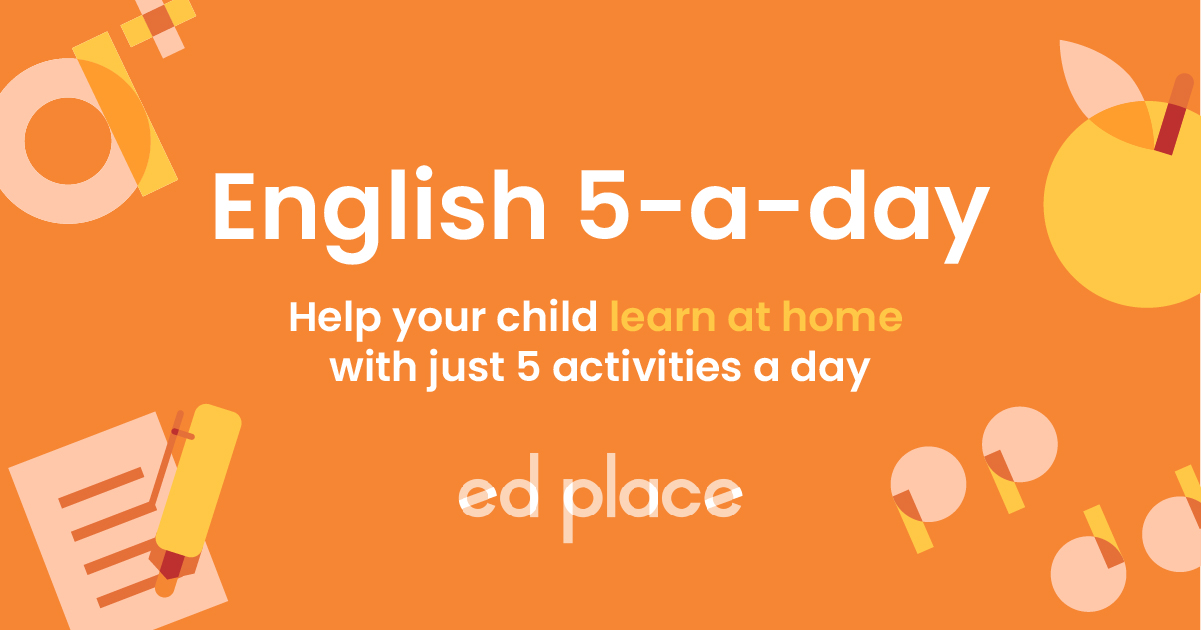
EdPlace's Year 5 and 6 Home Learning: Writing for a Purpose
Looking for short lessons to keep your child engaged and learning? Our experienced team of teachers have created English, maths and science lessons for the home, so your child can learn no matter where they are. And, as all activities are self-marked, you really can encourage your child to be an independent learner. Get them started on the lesson below and then jump into our teacher-created activities to practice what they've learnt. We've recommended five to ensure they feel secure in their knowledge - 5-a-day helps keeps the learning loss at bay (or so we think!). Are they keen to start practising straight away? Head to the bottom of the page to find the activities.
Now...onto the lesson!
Learning to write for a purpose - finding a reason for writing!
Children can often find writing difficult and come up with a variety of excuses not to do it! One of the main reasons is not knowing what to write or where to start. I’ve often sat with children trying to get the first sentence onto paper – if they don’t know what comes next, it can be very difficult!
Therefore, it is all about purpose – children need a reason to write. So how do you create it?
We’re confident that by the end of this guide your child will be able to:
1) Understand the reasons for writing
2) Apply these techniques to writing
3) Explain their learning back to you, if they've really cracked it!
Step 1: Reasons to Write
1. Always have a reason for writing – children write best when they have an incentive. If they are writing something that is meaningless to them, they will be reluctant to do it. Give a reason that is realistic and achievable – writing a thank you letter to Captain Tom for all his fundraising efforts for example, or writing a newspaper article that can then be sent off for other people to read.
2. Create an audience – children want to please and make other people happy. Give their writing an audience by showing it to others and asking for their feedback. Perhaps they could write a story and send it off for a grandparent to read or their teacher at school.
3. Immerse children in what they are writing about before they start. I recently set my class the task of finishing a story about being a deep sea diver. The problem was, none of them had been deep sea diving, so had no idea what it felt like! Before we even started, I showed them videos of divers and gathered as much footage as I could to show them the experience of being underwater. We looked at pictures and tried to imagine what they would be able to see and what sensations they would feel. If children don’t know what they have been asked to write about, they will struggle to get started.
4. Come up with a word bank of vocabulary – we often use word banks at school to collect all the vocabulary we will need for a specific piece of writing. For example, if I was writing a diary entry about being in WW2, I would need to know the vocabulary and words that a child would use in the 1940s. By collecting all this beforehand, it frees me up to write without worrying about my word choice. It might also help to gather images related to the topic as well; labelling pictures with the correct vocabulary helps it stick in our heads!
5. Make it competitive – children love a competition! If there is an incentive to do something, children will usually want to do it. Whether it is having work put on display, shown to a person who they have a lot of respect for or winning a prize, that extra incentive gives children a reason to write well.
Step 2: Practise Task
Writing can be challenging, especially in a home environment. Hopefully these ideas will help you get started and enjoy creating pieces of writing with your family.
Examples:
Choose one of the following ideas to write about, using the advice above to help you:
1. A newspaper article about something interesting that has happened to you recently
2. A letter to someone who you admire and would like to meet
3. A diary entry written as someone from history
4. A set of instructions telling people how to do something
Challenge: Write a story using characters from a book you have read.
Step 3: EdPlace Activities
Now, we've covered this together why not assign your child the following 5 activities in this order to see how much they've grasped?
All activities are created by teachers and automatically marked. Plus, with an EdPlace subscription, we can automatically progress your child at a level that's right for them. Sending you progress reports along the way so you can track and measure progress, together - brilliant!
Activity 1 - Manipulating Sentence Structure for Effect
Activity 2 - Understand How Authors Use Language
Activity 3 - Understanding the Difference Between Formal and Informal Language
Activity 4 - Proofreading your Writing Effectively
Activity 5 - Analysing and Editing Texts








